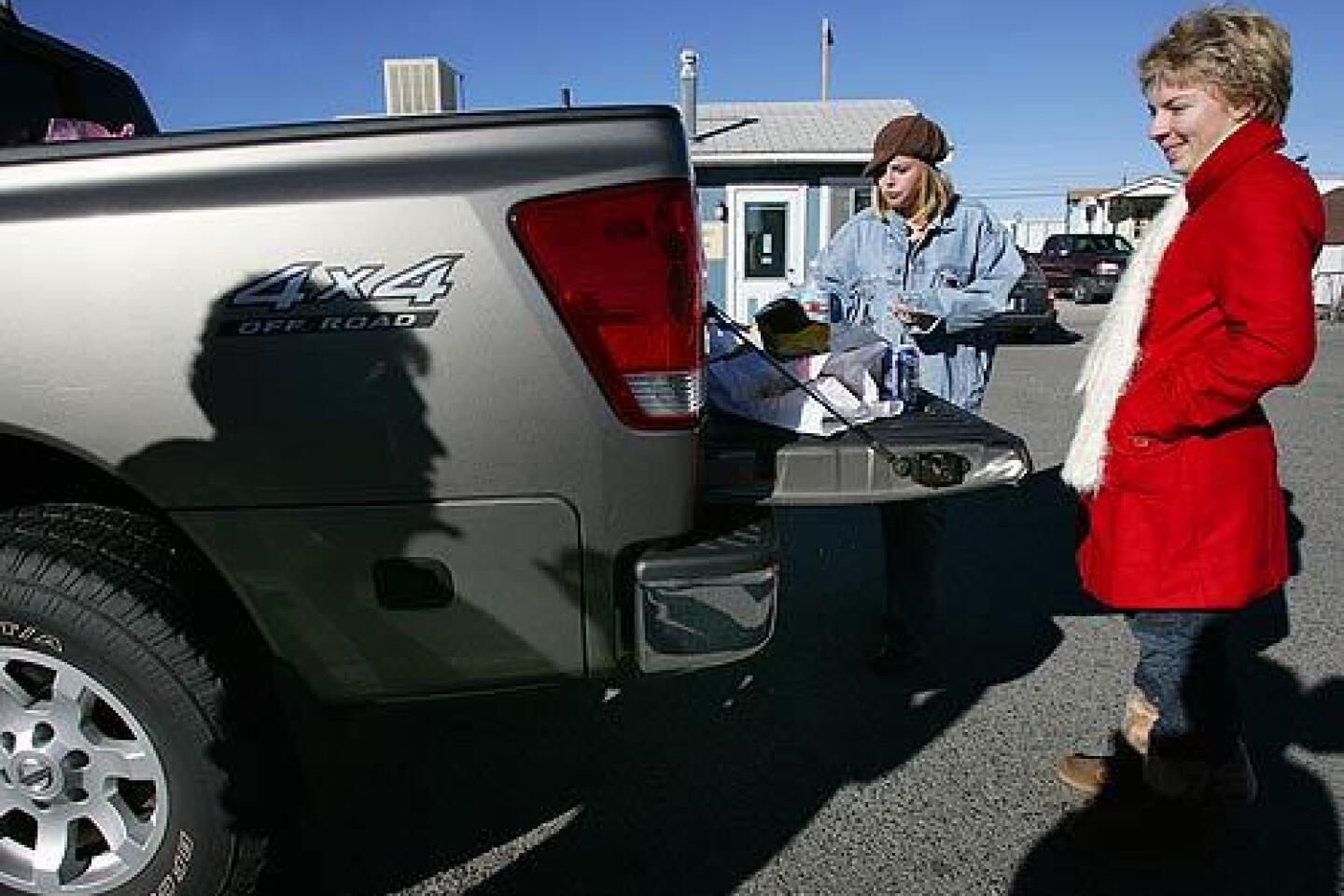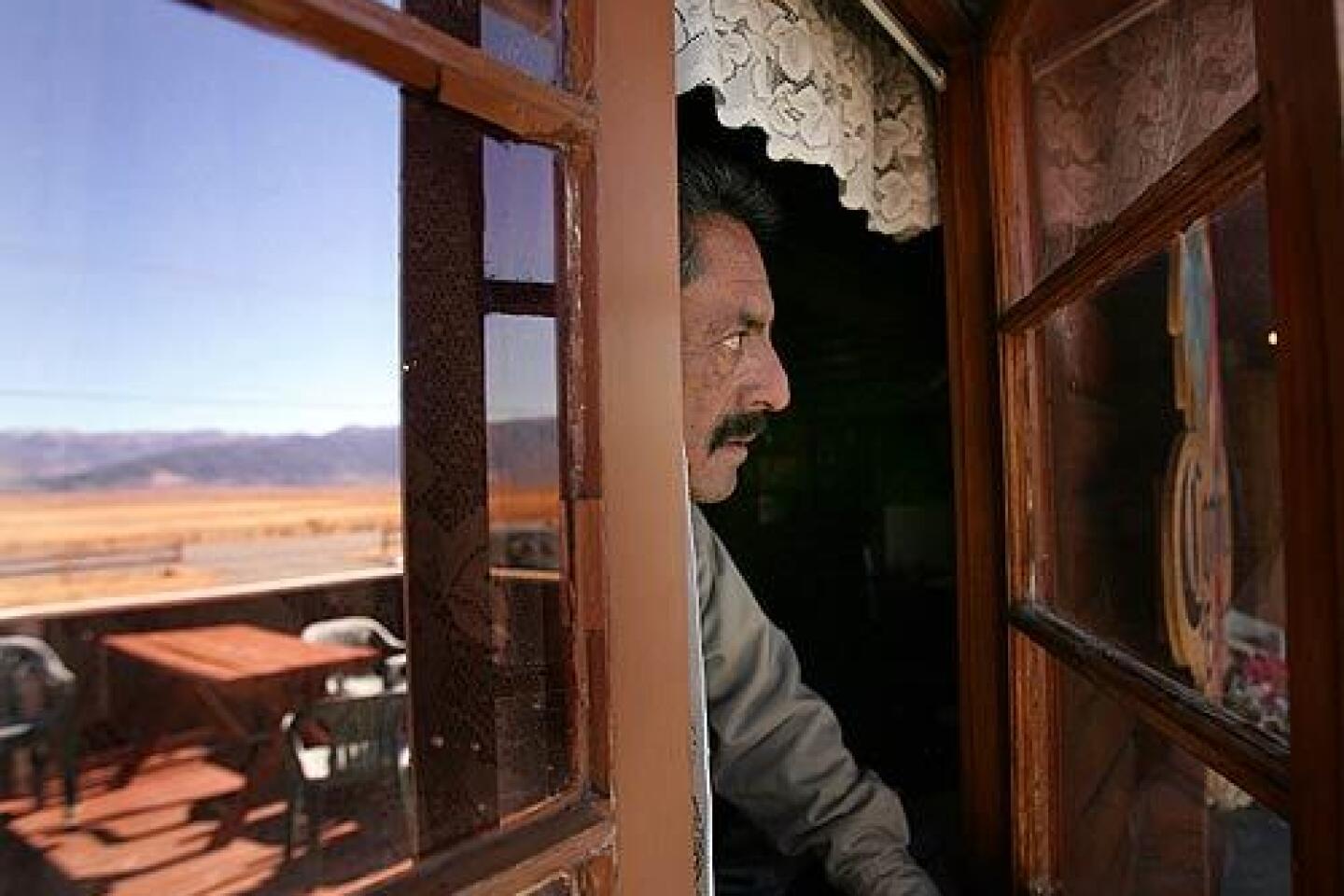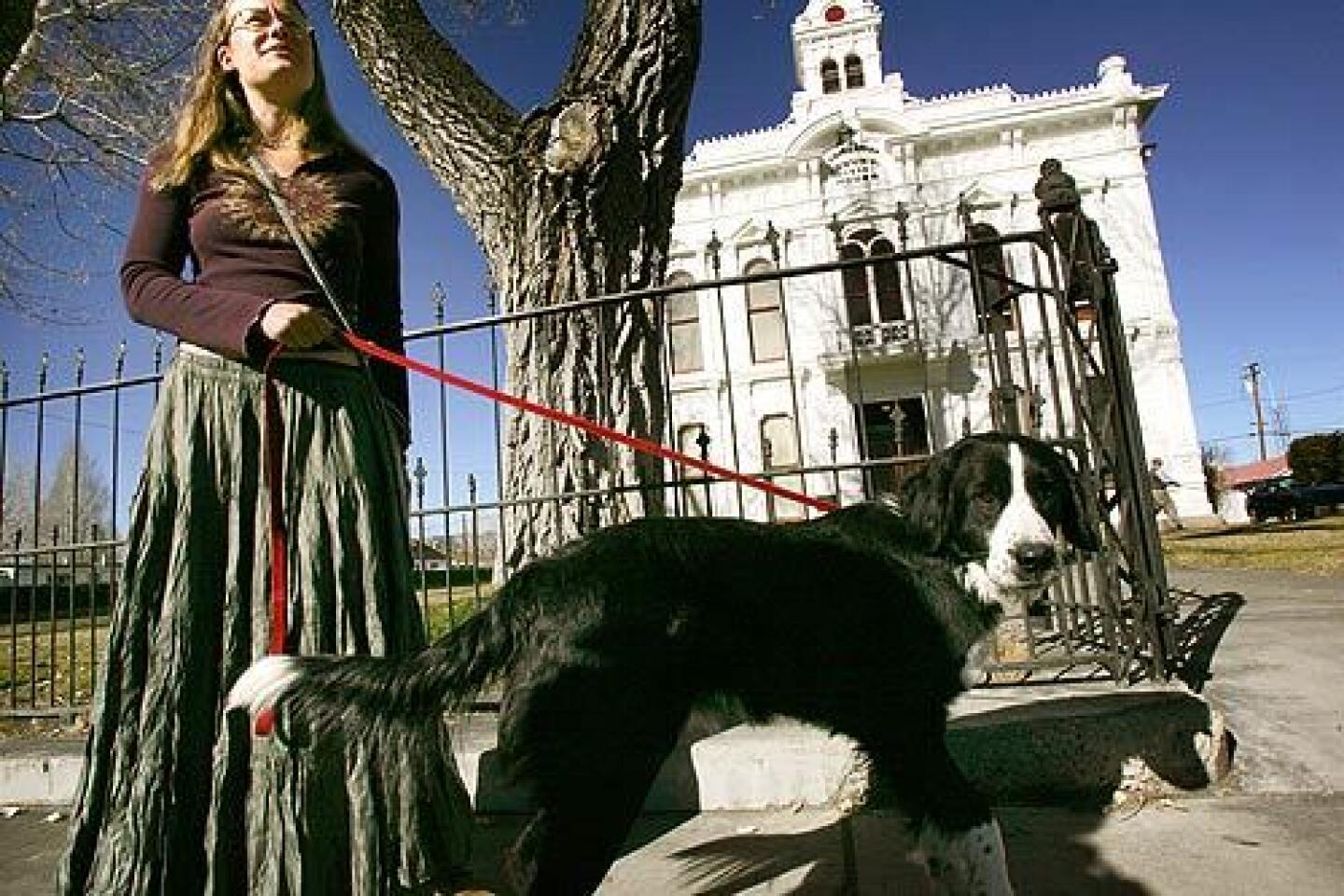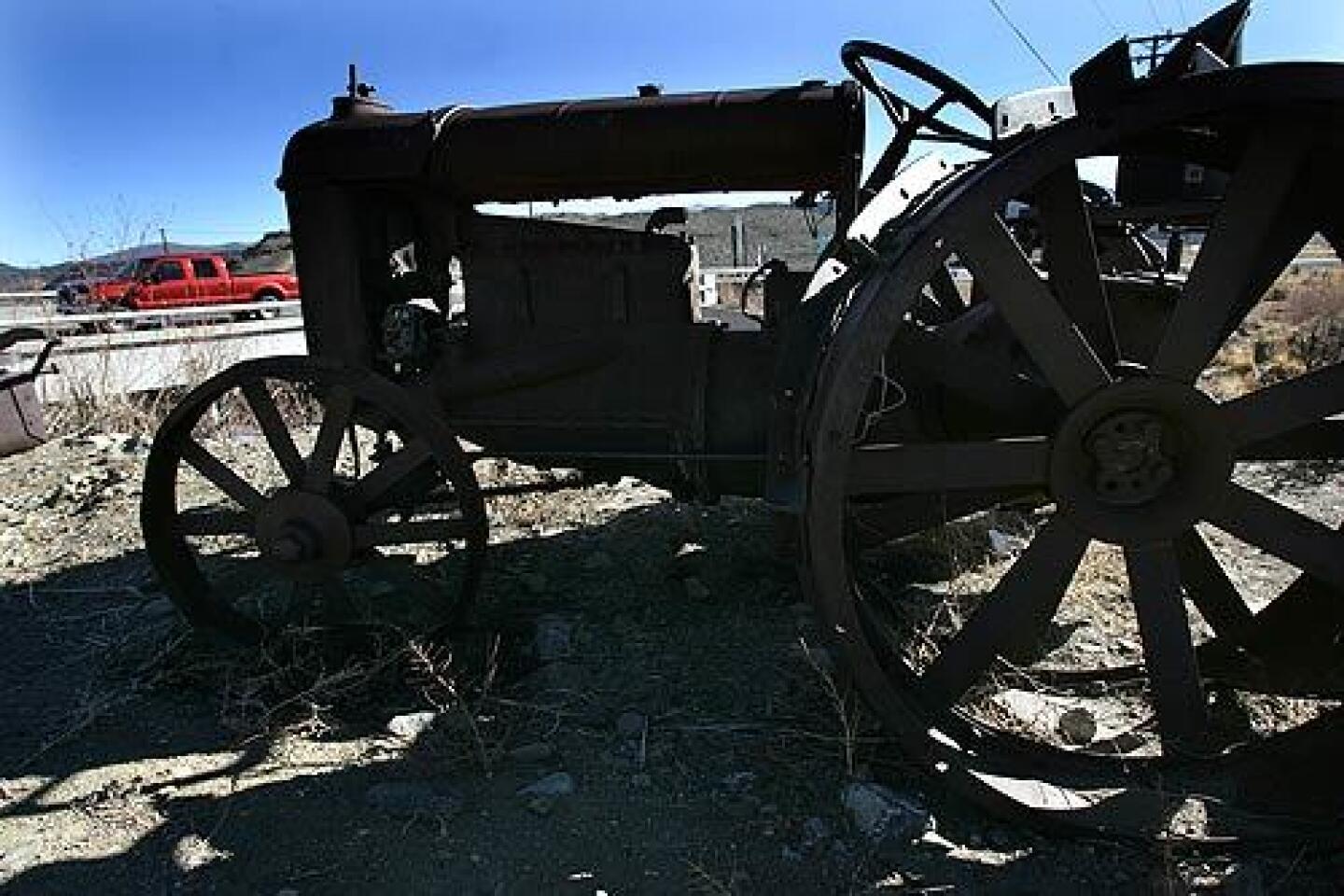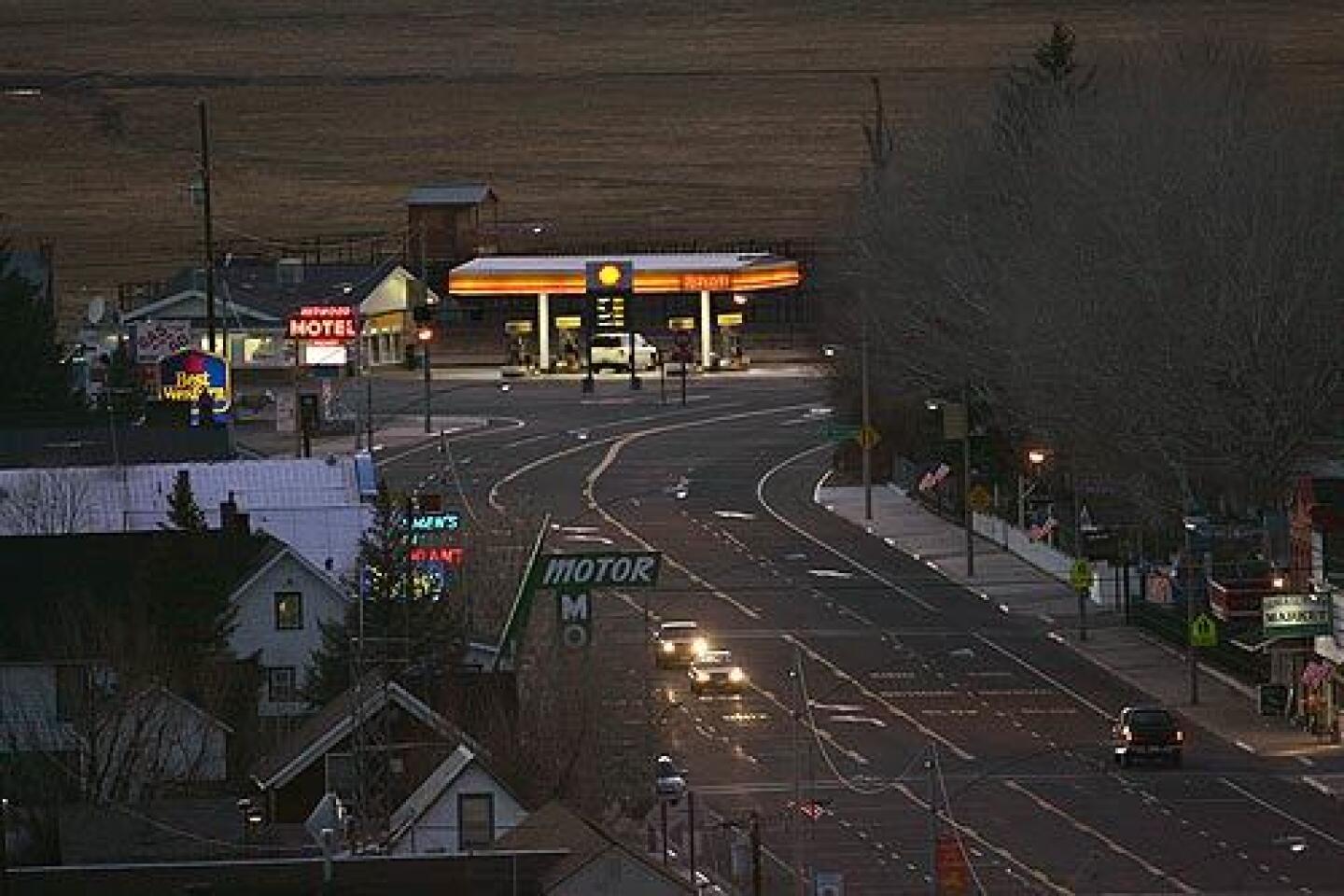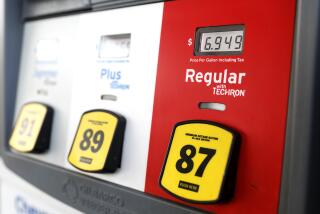Fuel prices produce gasps, fumes
. -- As Californians brace for ever-higher gasoline prices, they can glimpse what might be their future in this tiny Eastern Sierra town, where motorists pay more than $4 a gallon at the two gas stations.
The Shell station in Bridgeport, a tourist town of 850 residents during the summertime peak, is charging $4.09 a gallon for regular. The outlet posted prices above the $4 mark at least four other times this year.
Rosemary Glazier, who works in Bridgeport as Mono County’s assistant finance director, is so irritated by the prices that she refuses to fill up at the local stations.
“It makes the whole town look bad,” Glazier said of the $4-plus prices. Instead, she drives all the way to Gardnerville in Nevada, 62 miles north of Bridgeport, where gas is substantially cheaper.
Soon, however, there may be no escape.
Driven largely by the soaring cost of crude oil, pump prices across the country are approaching the lofty levels that set records during the summer -- an unprecedented turn of events that will make this Thanksgiving weekend the most expensive ever for millions of travelers. And $4 fuel may become a more common sight, perhaps as early as next year, some gas-watchers predict.
On Wednesday, the cost of U.S. benchmark crude oil reached as high as $99.29 a barrel in New York futures trading, briefly threatening to hit the psychologically daunting $100 mark, but pulled back to close at $97.29, down 74 cents.
Consumers already are getting slapped by the recent run-up in oil. On average, motorists nationwide are paying $3.09 for a gallon of self-serve regular, an increase of more than 86 cents from last Thanksgiving, according to the American Automobile Assn. In California, the average pump price is up 92 cents from last year, to $3.42 a gallon.
Los Angeles resident Jeffrey Kowalczyk got a taste of Bridgeport’s gas-price pain as he passed through town Tuesday on a Thanksgiving holiday trip to his grandmother’s house in Carson City, Nev.
Kowalczyk, who works for the advertising firm TBWA\Chiat\ Day, visited the Shell station earlier in the day with his two daughters.
“I just needed to top it off because there’s nothing much between here and Carson City . . . and it was just ‘ching-ching,’ ” Kowalczyk said as he munched on a sandwich from Albert’s Meat Market. Pointing to his Nissan V-8 Titan pickup, he added, “It’s going to eat the gas . . . so it’s going to be a good $100 to $200 more” than when they made the trip a year ago.
Even so, Kowalczyk figured that driving was still going to be cheaper than buying three airplane tickets, the cost of which has been escalating steadily because the price of jet fuel has jumped too. Plus, with U.S. Highway 395 offering beautiful mountain and valley views, he said, “It’s a nice drive.”
At the county government building a block away, Glazier said tourists like Kowalczyk were the ones pumping most of the gasoline in Bridgeport. “They get stuck buying it . . . because we’re in the middle of nowhere,” she said.
Glazier said many locals shun Bridgeport’s Shell station, as well as the nearby Gas & Go, which is typically priced slightly below the Shell.
John Simpson, who owns both stations, doesn’t staff the Gas & Go during the winter, but customers can still pump gas there and pay with a credit card.
Simpson said employees working the counters at the station get a lot of complaints, especially from customers who are accustomed to Nevada fuel costs. And he knows some people in Bridgeport are miffed by his prices.
“They don’t like me. They think I’m ripping them off,” he said.
Simpson said he had to charge more for fuel because it costs more to bring supplies by tanker truck either from Sacramento -- 170 miles away -- or from San Francisco, a 230-mile trek that includes dangerous mountain passes.
“If there’s any kind of hitch in the road . . . or it’s snowing, I’m dead in the water” and won’t get the fuel on time, Simpson said. In addition, it costs at least $1,000 to summon a technician to fix a gas pump, he said. “So you either go up [in price] or you go broke. It’s as simple as that.”
The Nevada stations, meanwhile, don’t charge customers as much in gas taxes and don’t have to comply with the expensive environmental regulations that apply to California stations.
Roy Panigada, a Bridgeport resident and the deputy tax collector for Mono County, is one of the many locals who dodge Simpson’s stations: “Everyone I know tries to avoid getting gas here.”
Panigada, who landed here after leaving Rancho Cucamonga six years ago, said he and others take advantage of Nevada’s cheaper fuel prices by filling up their cars as well as a few 5-gallon gas cans during shopping trips to Gardnerville or Carson City. He fills three of the containers every two weeks or so, to top off the other two family vehicles, with a little left over for his boat.
When he stopped at an Arco station in Gardnerville last week, the cost of regular was $3.13 a gallon, 96 cents a gallon cheaper than Bridgeport’s Shell, Panigada said. “It’s a substantial savings.”
Linda Kaiser, taking orders from the walk-up window at the Barn restaurant on Main Street, is another informal boycotter of local gas.
“I’ve never purchased gas here because it makes me aggravated,” said Kaiser, who travels 35 curvy miles to work from her home in Walker. “I’m cheap, so we work around it.”
Bridgeport’s business owners are less critical of the gas prices. They know the cost of everything jumps when you settle far from the city lights -- and they charge more for their goods too.
At Buster’s Food Market, a gallon of milk costs $5.49. In Los Angeles, Vons charged $4.79 a gallon for its house brand and $3.17 for the Westwood brand, according to its website Wednesday.
Raymond Robles, who owns Casa Michaela, a Mexican restaurant a mile south of Bridgeport’s tiny strip of shops, said the higher prices reflected the town’s remoteness and the fact that businesses there make the bulk of their money during a summer tourist season that lasts just a few months.
“I’m not upset about the price of gas,” Robles said. “It’s hard to make a living here. There are days in the winter when I have no customers at all.”
Robles said his Farmer Bros. coffee distributor tacks on a fuel surcharge of $3 a week, and a bunch of cilantro -- about 50 cents at a grocery store in Carson City -- costs him up to $1.20. It’s the same for everything, he says. “If it’s not a fuel surcharge, then there’s a minimum order for the truck to stop.”
A look around Bridgeport tells the story. It’s a big draw for fishermen, hunters and others who love the outdoors, but it doesn’t get the snow that attracts skiers and snowboarders to the likes of Mammoth Lakes to the south.
As soon as the trout-fishing season ends Nov. 15, the life goes out of Bridgeport. It’s not quite as dead as Bodie, the famous ghost town not far away, but it’s close enough. The summertime crowd of 850 dwindles to 500 year-round residents this time of year, and only a few shops and restaurants stay open through the winter.
Albert Pegorare, who owns Albert’s Meat Market, stays open year-round and knows the pain of seasonal income. He said he believes in supporting local businesses -- and that includes Simpson’s stations.
“I don’t think John makes much money over there” at the Shell, Pegorare said. “I know that’s a minority opinion, but I think he gets a bad rap.”
High gas prices do concern him, though. Many of his customers come from Southern California or San Francisco, and when fuel costs rise across the state, his business dips.
“You have your dedicated fishermen who come no matter what the price of gas is, but they’re a small handful,” Pegorare said. “But our campgrounds are generally filled with families.”
With household commutes getting more and more expensive in Los Angeles and San Francisco, at least some may opt to skip the long drive to Bridgeport, he said. High gas prices “are going to bite all of us, because if the campgrounds are half full, then half the number of people will be coming here to buy a porterhouse steak or to hit the local bakery.”
As for surviving gasoline prices that top $4 a gallon, Pegorare had this advice: “Get a good pair of shoes.”
elizabeth.douglass@
latimes.com
More to Read
Start your day right
Sign up for Essential California for news, features and recommendations from the L.A. Times and beyond in your inbox six days a week.
You may occasionally receive promotional content from the Los Angeles Times.
